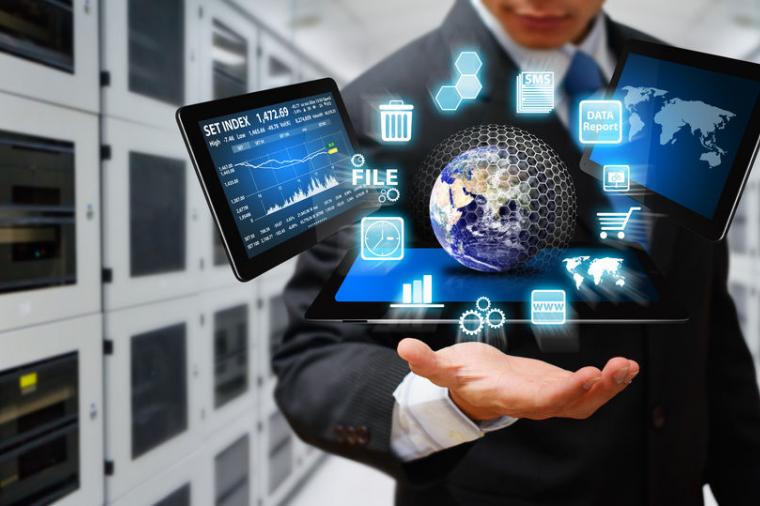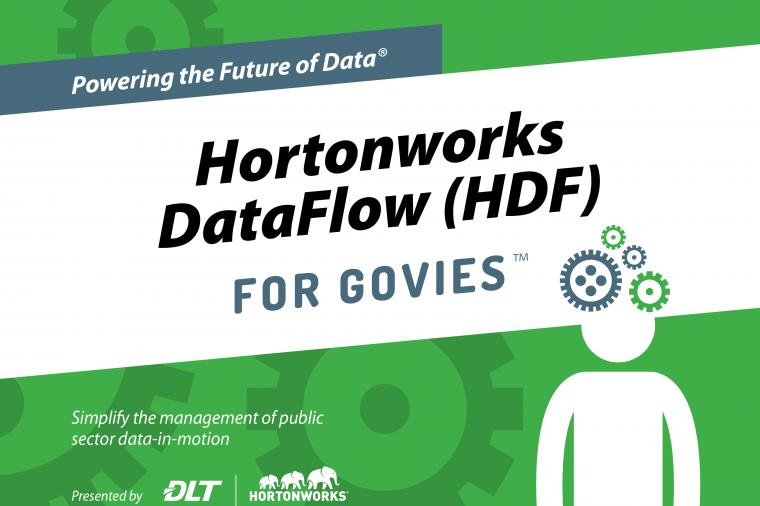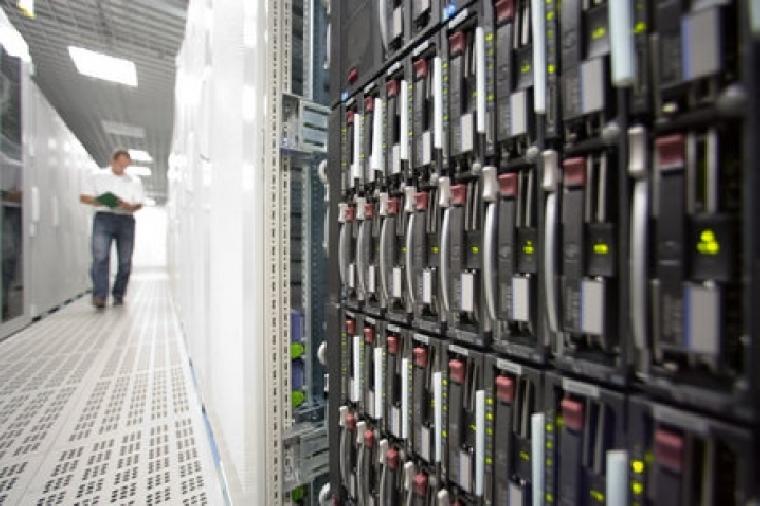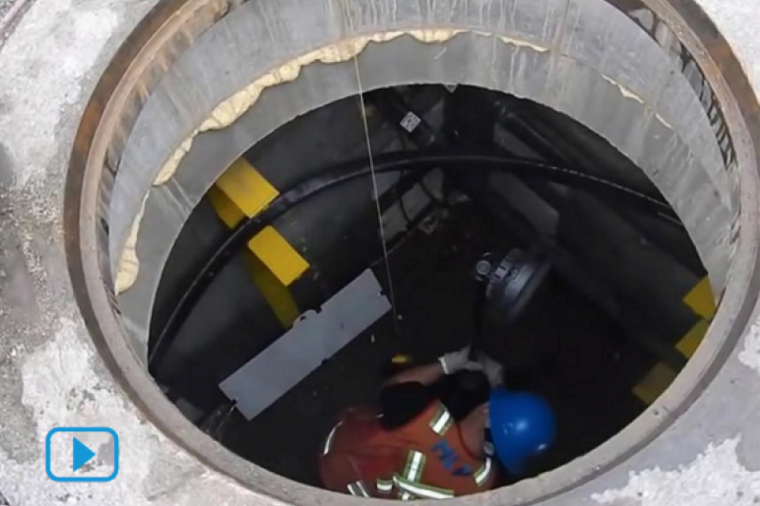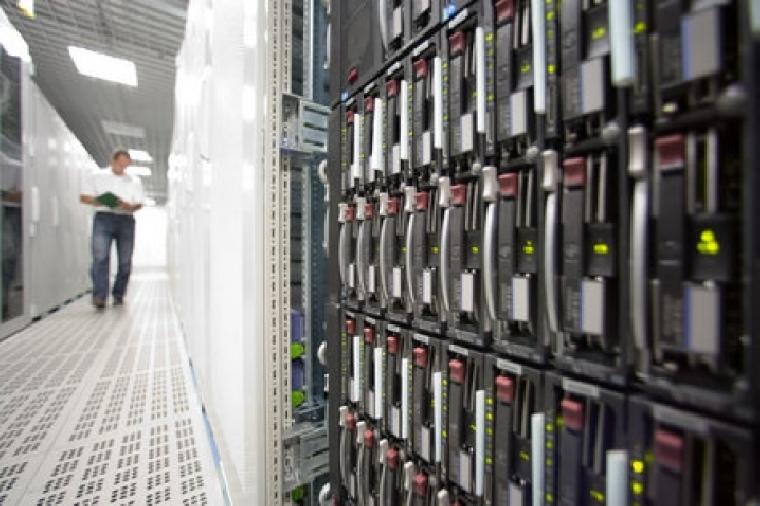Big Data in the Public Sector (continued)
Part 1b: Big Data in the Public Sector (continued)
 A little over a month ago, I highlighted the differences between Big Data and data from ten years ago. I also covered how Big Data solutions unlock new approaches to turning data into information and information into knowledge that can be acted upon. Now, let’s take a closer look at some ways that Big Data might be exploited in the public sector (and in some cases is already being exploited). These examples may help to trigger specific ideas for leveraging Big Data to address your agency’s mission.
Congress
Social media streams, when augmented by location data and analyzed with sentiment analysis tools, can provide real-time insights into voter interest and evolving opinions on political issues. Similarly, social media and the news stream can provide timely feedback on the economic impact of policy changes affecting companies in specific States and Congressional Districts.
Retail
Together, the Army & Air Force Exchange Service (AAFES), the Navy Exchange, and the Defense Commissary Agency (DECA) have sales of about $20 Billion per year. These organizations can selectively leverage evolving retail best practices in Big Data analytics to predict and respond to changes in customer preferences and address service problems identified in social media.
Healthcare
Comprehensive analysis of millions of anonymized medical records, disability filings, and insurance company data can be used to identify the most effective treatments, and, when linked to geo-location data, provide insights into possible environmental causes. Overuse of treatments can be detected and assessed on a scale not previously possible. Treatments with no measurable beneficial outcome have been estimated to cost $250-325 billion annually by Thompson Reuters.
Continuous monitoring of multiple patient physical sensor readings, transmitted wirelessly to a central Big Data analysis point, could, as a routine service, provide physicians and medical technicians with deeper insights into disease causality, progression, and treatment efficacy.
Aggregating prescription data and pharmaceutical supply chain demand data with location data can alert public health officials to the spread of disease. Combining this information with social media chatter can offer additional and perhaps more timely insights into disease outbreaks.
Energy
Smart Grid technologies are slowly being adopted across the U.S. by both Investor Owned and Publicly Owned utilities. To reach its true potential of improving the efficiency of the national power grid and lowering costs for the consumer, Big Data solutions are being developed and deployed to ingest, analyze, and react to the high volumes of sensor data that Smart Grid devices generate. As just one example, Smart Meters installed at power consumer endpoints transmit data every 15 minutes - data that is required to be stored for 7 years.
Homeland Security
In natural disaster emergencies, social media traffic combined with GPS data and traffic sensor data can provide real-time information on the progress of citizen evacuations. Big Data analytics can play a vital role in identifying localities with the most urgent needs after a disaster by combining imagery, weather, and social media data.
A little over a month ago, I highlighted the differences between Big Data and data from ten years ago. I also covered how Big Data solutions unlock new approaches to turning data into information and information into knowledge that can be acted upon. Now, let’s take a closer look at some ways that Big Data might be exploited in the public sector (and in some cases is already being exploited). These examples may help to trigger specific ideas for leveraging Big Data to address your agency’s mission.
Congress
Social media streams, when augmented by location data and analyzed with sentiment analysis tools, can provide real-time insights into voter interest and evolving opinions on political issues. Similarly, social media and the news stream can provide timely feedback on the economic impact of policy changes affecting companies in specific States and Congressional Districts.
Retail
Together, the Army & Air Force Exchange Service (AAFES), the Navy Exchange, and the Defense Commissary Agency (DECA) have sales of about $20 Billion per year. These organizations can selectively leverage evolving retail best practices in Big Data analytics to predict and respond to changes in customer preferences and address service problems identified in social media.
Healthcare
Comprehensive analysis of millions of anonymized medical records, disability filings, and insurance company data can be used to identify the most effective treatments, and, when linked to geo-location data, provide insights into possible environmental causes. Overuse of treatments can be detected and assessed on a scale not previously possible. Treatments with no measurable beneficial outcome have been estimated to cost $250-325 billion annually by Thompson Reuters.
Continuous monitoring of multiple patient physical sensor readings, transmitted wirelessly to a central Big Data analysis point, could, as a routine service, provide physicians and medical technicians with deeper insights into disease causality, progression, and treatment efficacy.
Aggregating prescription data and pharmaceutical supply chain demand data with location data can alert public health officials to the spread of disease. Combining this information with social media chatter can offer additional and perhaps more timely insights into disease outbreaks.
Energy
Smart Grid technologies are slowly being adopted across the U.S. by both Investor Owned and Publicly Owned utilities. To reach its true potential of improving the efficiency of the national power grid and lowering costs for the consumer, Big Data solutions are being developed and deployed to ingest, analyze, and react to the high volumes of sensor data that Smart Grid devices generate. As just one example, Smart Meters installed at power consumer endpoints transmit data every 15 minutes - data that is required to be stored for 7 years.
Homeland Security
In natural disaster emergencies, social media traffic combined with GPS data and traffic sensor data can provide real-time information on the progress of citizen evacuations. Big Data analytics can play a vital role in identifying localities with the most urgent needs after a disaster by combining imagery, weather, and social media data. Cybersecurity
Because of the volume and velocity of available data, enterprise security is a prime candidate for the application of Big Data techniques. Network packet data, web log data, user activity data, transaction monitoring data, and threat data from third parties constitutes a mass of information relevant to security professionals. However, the resources required to eliminate false positives argues for more sophisticated analytical techniques for Big Data that can more effectively support security engineers.
Critical Infrastructure Protection
The advent of IPv6 has provided a key aspect of the evolving Internet of Things - where trillions of devices and sensors can each have their own static Internet address. This will make feasible the deployment and collection of data from devices deployed throughout our critical infrastructure to provide the status of remote assets and alarm on conditions that are abnormal.
Financial
One of the difficulties that must be dealt with in current fraud and overpayment detection efforts is similar to the cyber security threat problem: too many records to process and too many false positives to address with limited resources. Big Data analytics can help to solve this problem by employing more sophisticated tools for the assessment of unstructured data related to claims, especially when data is linked among seemingly disparate datasets. For example, highly localized weather data and time-series aerial or satellite imagery linked to storm or flood damage claims can help to narrow the range of suspect claims that require closer investigation.
Transportation
DLT Solutions’ vendor partner TomTom uses a Big Data approach to mine its collection of 5 trillion GPS data points to accurately predict travel times day or night, in good weather or bad. This product, CustomTravelTimes, grows by 6 billion data points per day. Benefits to the traveler are obvious, but comprehensive GPS data can also benefit transportation planners, or first responders who need to select the fastest route to an emergency, regardless of time of day or weather conditions.
The examples above are only a few of the applications for Big Data in the Public Sector. Stay tuned for the second and third parts of this Big Data series in the coming weeks. In the meantime, please join the dialog by suggesting novel ways that your agency might consider using a Big Data approach in our comments section.
Cybersecurity
Because of the volume and velocity of available data, enterprise security is a prime candidate for the application of Big Data techniques. Network packet data, web log data, user activity data, transaction monitoring data, and threat data from third parties constitutes a mass of information relevant to security professionals. However, the resources required to eliminate false positives argues for more sophisticated analytical techniques for Big Data that can more effectively support security engineers.
Critical Infrastructure Protection
The advent of IPv6 has provided a key aspect of the evolving Internet of Things - where trillions of devices and sensors can each have their own static Internet address. This will make feasible the deployment and collection of data from devices deployed throughout our critical infrastructure to provide the status of remote assets and alarm on conditions that are abnormal.
Financial
One of the difficulties that must be dealt with in current fraud and overpayment detection efforts is similar to the cyber security threat problem: too many records to process and too many false positives to address with limited resources. Big Data analytics can help to solve this problem by employing more sophisticated tools for the assessment of unstructured data related to claims, especially when data is linked among seemingly disparate datasets. For example, highly localized weather data and time-series aerial or satellite imagery linked to storm or flood damage claims can help to narrow the range of suspect claims that require closer investigation.
Transportation
DLT Solutions’ vendor partner TomTom uses a Big Data approach to mine its collection of 5 trillion GPS data points to accurately predict travel times day or night, in good weather or bad. This product, CustomTravelTimes, grows by 6 billion data points per day. Benefits to the traveler are obvious, but comprehensive GPS data can also benefit transportation planners, or first responders who need to select the fastest route to an emergency, regardless of time of day or weather conditions.
The examples above are only a few of the applications for Big Data in the Public Sector. Stay tuned for the second and third parts of this Big Data series in the coming weeks. In the meantime, please join the dialog by suggesting novel ways that your agency might consider using a Big Data approach in our comments section.
 A little over a month ago, I highlighted the differences between Big Data and data from ten years ago. I also covered how Big Data solutions unlock new approaches to turning data into information and information into knowledge that can be acted upon. Now, let’s take a closer look at some ways that Big Data might be exploited in the public sector (and in some cases is already being exploited). These examples may help to trigger specific ideas for leveraging Big Data to address your agency’s mission.
Congress
Social media streams, when augmented by location data and analyzed with sentiment analysis tools, can provide real-time insights into voter interest and evolving opinions on political issues. Similarly, social media and the news stream can provide timely feedback on the economic impact of policy changes affecting companies in specific States and Congressional Districts.
Retail
Together, the Army & Air Force Exchange Service (AAFES), the Navy Exchange, and the Defense Commissary Agency (DECA) have sales of about $20 Billion per year. These organizations can selectively leverage evolving retail best practices in Big Data analytics to predict and respond to changes in customer preferences and address service problems identified in social media.
Healthcare
Comprehensive analysis of millions of anonymized medical records, disability filings, and insurance company data can be used to identify the most effective treatments, and, when linked to geo-location data, provide insights into possible environmental causes. Overuse of treatments can be detected and assessed on a scale not previously possible. Treatments with no measurable beneficial outcome have been estimated to cost $250-325 billion annually by Thompson Reuters.
Continuous monitoring of multiple patient physical sensor readings, transmitted wirelessly to a central Big Data analysis point, could, as a routine service, provide physicians and medical technicians with deeper insights into disease causality, progression, and treatment efficacy.
Aggregating prescription data and pharmaceutical supply chain demand data with location data can alert public health officials to the spread of disease. Combining this information with social media chatter can offer additional and perhaps more timely insights into disease outbreaks.
Energy
Smart Grid technologies are slowly being adopted across the U.S. by both Investor Owned and Publicly Owned utilities. To reach its true potential of improving the efficiency of the national power grid and lowering costs for the consumer, Big Data solutions are being developed and deployed to ingest, analyze, and react to the high volumes of sensor data that Smart Grid devices generate. As just one example, Smart Meters installed at power consumer endpoints transmit data every 15 minutes - data that is required to be stored for 7 years.
Homeland Security
In natural disaster emergencies, social media traffic combined with GPS data and traffic sensor data can provide real-time information on the progress of citizen evacuations. Big Data analytics can play a vital role in identifying localities with the most urgent needs after a disaster by combining imagery, weather, and social media data.
A little over a month ago, I highlighted the differences between Big Data and data from ten years ago. I also covered how Big Data solutions unlock new approaches to turning data into information and information into knowledge that can be acted upon. Now, let’s take a closer look at some ways that Big Data might be exploited in the public sector (and in some cases is already being exploited). These examples may help to trigger specific ideas for leveraging Big Data to address your agency’s mission.
Congress
Social media streams, when augmented by location data and analyzed with sentiment analysis tools, can provide real-time insights into voter interest and evolving opinions on political issues. Similarly, social media and the news stream can provide timely feedback on the economic impact of policy changes affecting companies in specific States and Congressional Districts.
Retail
Together, the Army & Air Force Exchange Service (AAFES), the Navy Exchange, and the Defense Commissary Agency (DECA) have sales of about $20 Billion per year. These organizations can selectively leverage evolving retail best practices in Big Data analytics to predict and respond to changes in customer preferences and address service problems identified in social media.
Healthcare
Comprehensive analysis of millions of anonymized medical records, disability filings, and insurance company data can be used to identify the most effective treatments, and, when linked to geo-location data, provide insights into possible environmental causes. Overuse of treatments can be detected and assessed on a scale not previously possible. Treatments with no measurable beneficial outcome have been estimated to cost $250-325 billion annually by Thompson Reuters.
Continuous monitoring of multiple patient physical sensor readings, transmitted wirelessly to a central Big Data analysis point, could, as a routine service, provide physicians and medical technicians with deeper insights into disease causality, progression, and treatment efficacy.
Aggregating prescription data and pharmaceutical supply chain demand data with location data can alert public health officials to the spread of disease. Combining this information with social media chatter can offer additional and perhaps more timely insights into disease outbreaks.
Energy
Smart Grid technologies are slowly being adopted across the U.S. by both Investor Owned and Publicly Owned utilities. To reach its true potential of improving the efficiency of the national power grid and lowering costs for the consumer, Big Data solutions are being developed and deployed to ingest, analyze, and react to the high volumes of sensor data that Smart Grid devices generate. As just one example, Smart Meters installed at power consumer endpoints transmit data every 15 minutes - data that is required to be stored for 7 years.
Homeland Security
In natural disaster emergencies, social media traffic combined with GPS data and traffic sensor data can provide real-time information on the progress of citizen evacuations. Big Data analytics can play a vital role in identifying localities with the most urgent needs after a disaster by combining imagery, weather, and social media data. Cybersecurity
Because of the volume and velocity of available data, enterprise security is a prime candidate for the application of Big Data techniques. Network packet data, web log data, user activity data, transaction monitoring data, and threat data from third parties constitutes a mass of information relevant to security professionals. However, the resources required to eliminate false positives argues for more sophisticated analytical techniques for Big Data that can more effectively support security engineers.
Critical Infrastructure Protection
The advent of IPv6 has provided a key aspect of the evolving Internet of Things - where trillions of devices and sensors can each have their own static Internet address. This will make feasible the deployment and collection of data from devices deployed throughout our critical infrastructure to provide the status of remote assets and alarm on conditions that are abnormal.
Financial
One of the difficulties that must be dealt with in current fraud and overpayment detection efforts is similar to the cyber security threat problem: too many records to process and too many false positives to address with limited resources. Big Data analytics can help to solve this problem by employing more sophisticated tools for the assessment of unstructured data related to claims, especially when data is linked among seemingly disparate datasets. For example, highly localized weather data and time-series aerial or satellite imagery linked to storm or flood damage claims can help to narrow the range of suspect claims that require closer investigation.
Transportation
DLT Solutions’ vendor partner TomTom uses a Big Data approach to mine its collection of 5 trillion GPS data points to accurately predict travel times day or night, in good weather or bad. This product, CustomTravelTimes, grows by 6 billion data points per day. Benefits to the traveler are obvious, but comprehensive GPS data can also benefit transportation planners, or first responders who need to select the fastest route to an emergency, regardless of time of day or weather conditions.
The examples above are only a few of the applications for Big Data in the Public Sector. Stay tuned for the second and third parts of this Big Data series in the coming weeks. In the meantime, please join the dialog by suggesting novel ways that your agency might consider using a Big Data approach in our comments section.
Cybersecurity
Because of the volume and velocity of available data, enterprise security is a prime candidate for the application of Big Data techniques. Network packet data, web log data, user activity data, transaction monitoring data, and threat data from third parties constitutes a mass of information relevant to security professionals. However, the resources required to eliminate false positives argues for more sophisticated analytical techniques for Big Data that can more effectively support security engineers.
Critical Infrastructure Protection
The advent of IPv6 has provided a key aspect of the evolving Internet of Things - where trillions of devices and sensors can each have their own static Internet address. This will make feasible the deployment and collection of data from devices deployed throughout our critical infrastructure to provide the status of remote assets and alarm on conditions that are abnormal.
Financial
One of the difficulties that must be dealt with in current fraud and overpayment detection efforts is similar to the cyber security threat problem: too many records to process and too many false positives to address with limited resources. Big Data analytics can help to solve this problem by employing more sophisticated tools for the assessment of unstructured data related to claims, especially when data is linked among seemingly disparate datasets. For example, highly localized weather data and time-series aerial or satellite imagery linked to storm or flood damage claims can help to narrow the range of suspect claims that require closer investigation.
Transportation
DLT Solutions’ vendor partner TomTom uses a Big Data approach to mine its collection of 5 trillion GPS data points to accurately predict travel times day or night, in good weather or bad. This product, CustomTravelTimes, grows by 6 billion data points per day. Benefits to the traveler are obvious, but comprehensive GPS data can also benefit transportation planners, or first responders who need to select the fastest route to an emergency, regardless of time of day or weather conditions.
The examples above are only a few of the applications for Big Data in the Public Sector. Stay tuned for the second and third parts of this Big Data series in the coming weeks. In the meantime, please join the dialog by suggesting novel ways that your agency might consider using a Big Data approach in our comments section.











